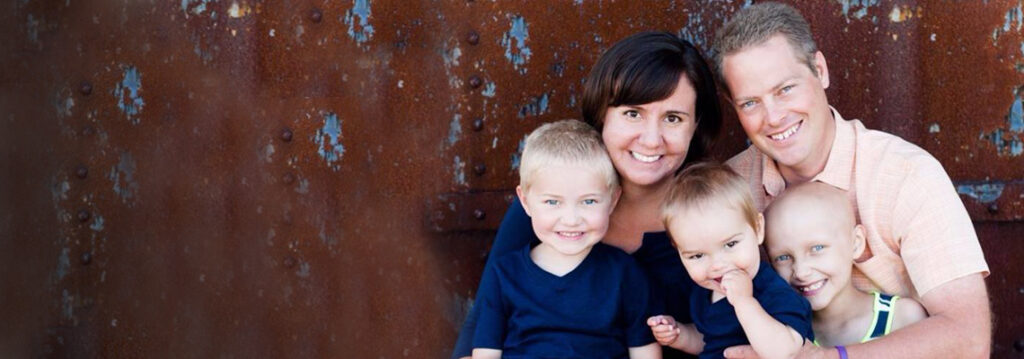
One Friday in January of 2014 our oldest child, Amy, who was seven at the time, came home from school feeling “not quite right.” She had a low grade fever and she was a little tired. She also had a nagging ache in her chest, which her pediatrician had attributed to growing pains for months. Amy was always an active child who loved playing with her brothers, doing gymnastics, crafts and reading. By Monday she was in the ICU at Boston Children’s Hospital and we learned that the ache was really a collapsed lung and a nine centimeter mass in her chest pushing on her lungs and heart. We were shocked. Even though Amy’s situation was already quite uncertain, we were still completely unaware of how intense the next year would be for our family.
The tumor was too large and too enmeshed in vital organs to be removed so Amy was placed on an aggressive chemo protocol designed for high risk rhabdomyosarcoma in the hope of shrinking the tumor. In April the tumor was removed and a final diagnosis was made – Type 3 Pleuropulmonary Blastoma (PPB). Amy’s final diagnosis brought new concerns for our family. In 2008 this incredibly rare cancer was linked to a specific genetic mutation, called Dicer1 cancer predisposition syndrome. We learned that not only Amy, but also her youngest brother, Hunter, had the Dicer1 mutation.
PPB has a track record of being resistant to chemotherapy and radiation, so a more aggressive surgery was recommended. In September Amy had her left lung and diaphragm removed, as well as part of the lining around her heart. Two days after Amy’s surgery a CT scan of 20 month old Hunter revealed a 3 cm cystic tumor on his lower left lung, characteristic of type 1 PPB, the earliest stage of the disease. Although we were shocked and saddened by the news, we quickly took action to rid Hunter of cancer and he had surgery two weeks later. Thankfully chemotherapy was not recommended for his type 1 PPB.
There have been many other trials for Amy, she had two brain biopsies after a suspicious spot was found, a total of ten surgeries related to her treatment, months of illness caused by harsh chemo, a month of radiation and its side effects. She had to put so much of her childhood on hold. She missed out on countless days of school, and she often felt lonely and sad, on top of being sick.
Now sixteen months later we are grateful that she and Hunter are currently “no evidence of disease.” Amy even has a fuzzy head of blond hair but she still struggles with the emotional toll her disease and treatment took on her. Our family has a strong faith and we know that God will use this experience for good in Amy’s life. Amy feels great empathy for suffering children and she hopes to be able to help them in some way. Amy is wise beyond her years and she is very aware of the reality of her situation and how close she came to death. She also feels sadness that not all the children will be healed as she was. So although the phase of awful medicine and painful procedures is behind her, the emotional healing will take many more years. Our family is honored and touched to have been asked to be a part of the first group of Rett’s Roost. Connecting with other families and children who have a shared history will be instrumental in the recovery process.